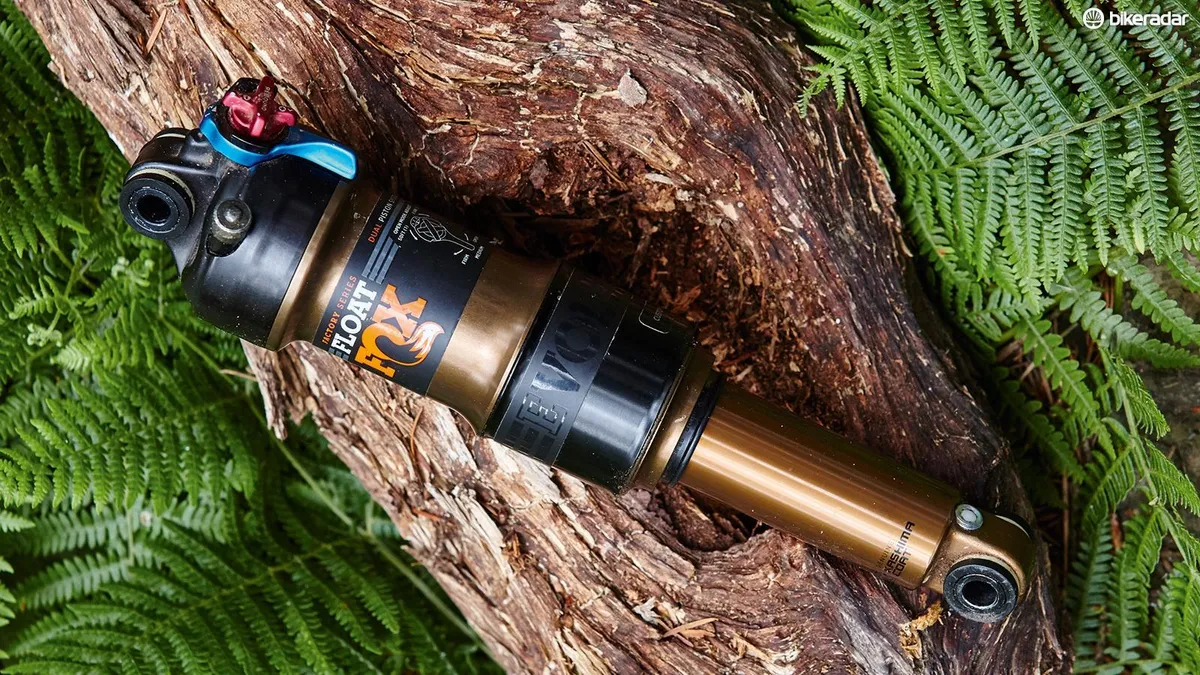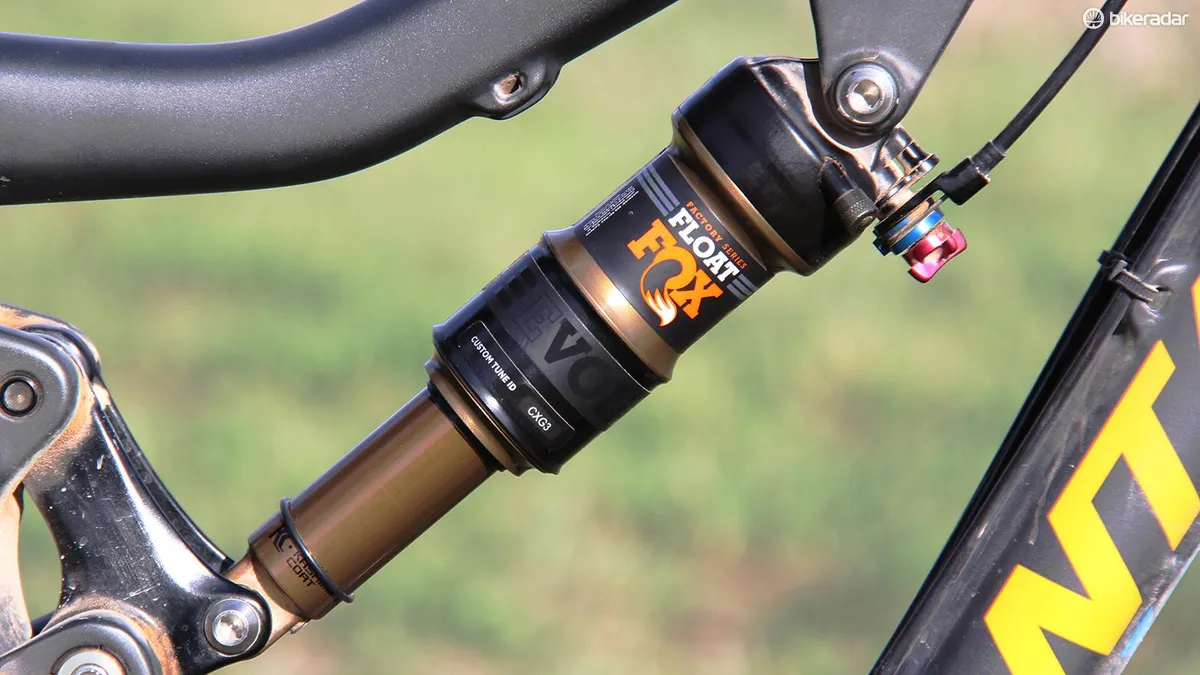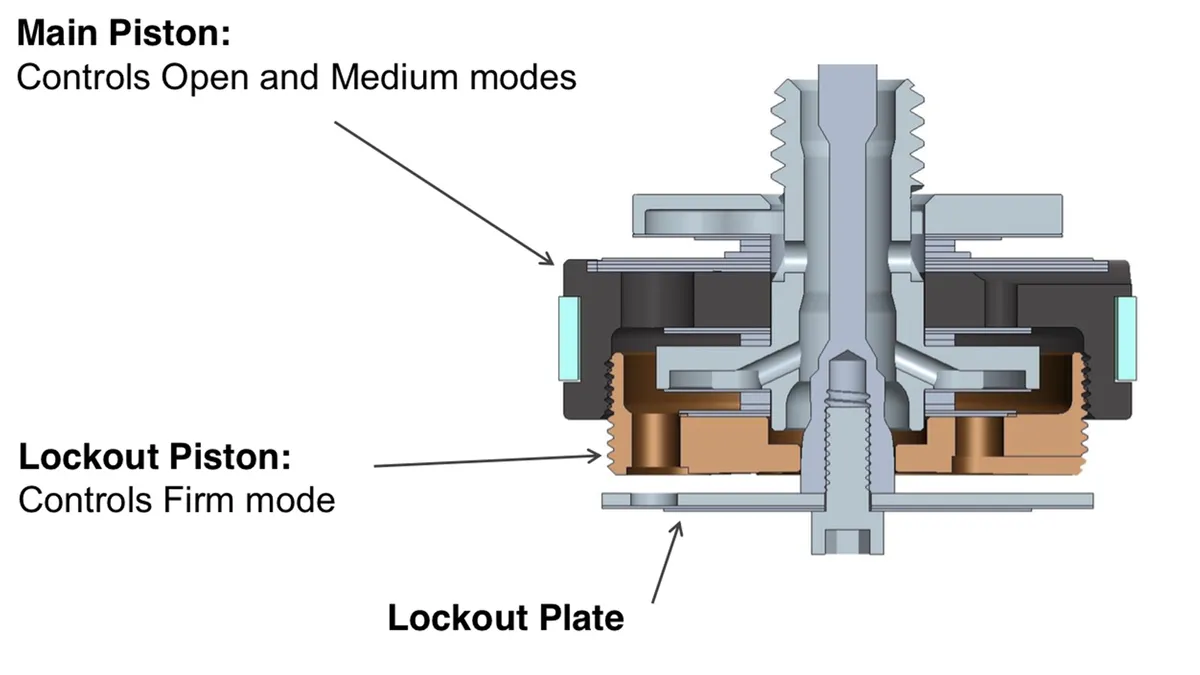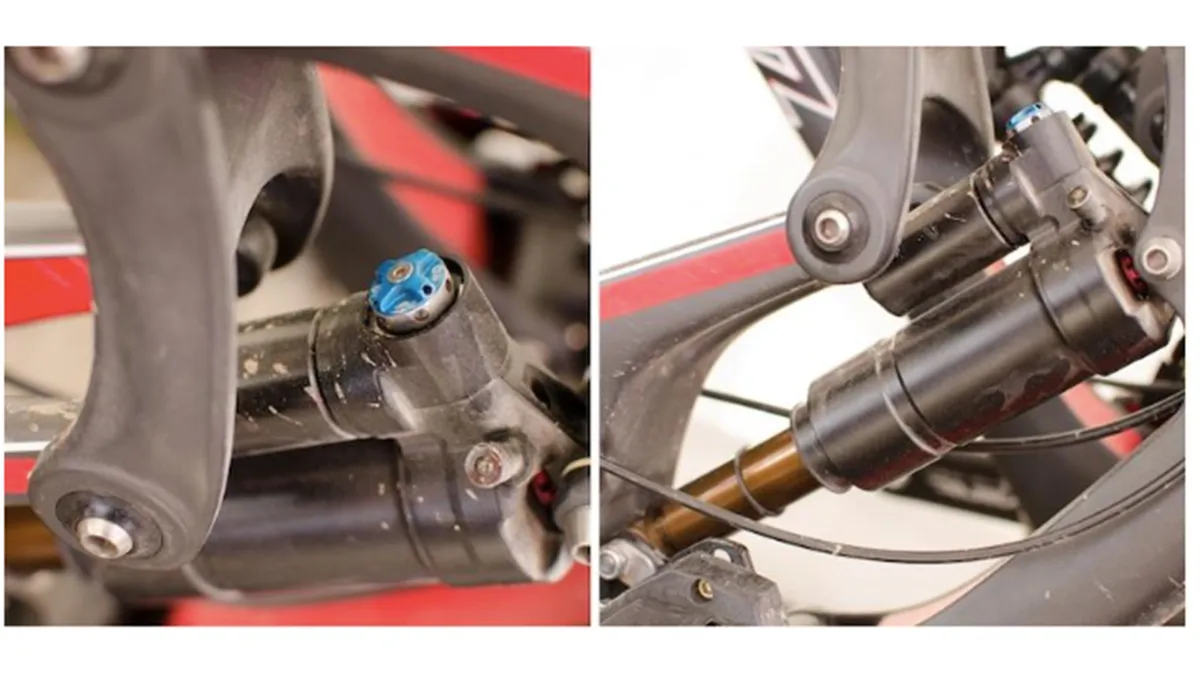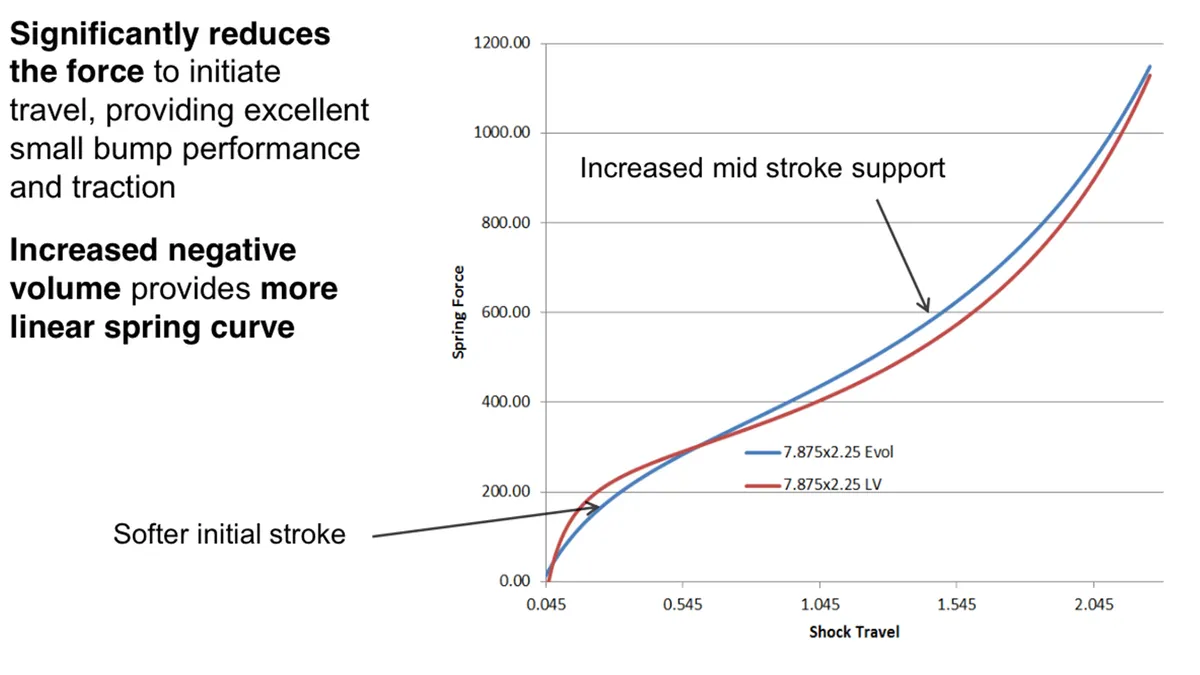Fox and RockShox have been battling each other for bike shock supremacy for around 20 years. So it’s no surprise that the former has recently introduced an answer to RockShox’s successful DebonAir developments, leapfrogging back into the everyday performance lead as a result.
Related: Six of the best MTB air shocks
The Float DPS delivers a wider range of adjustments, thanks to a new dual-piston system, and a more linear spring curve, thanks to a new air sleeve.
In the past, if you wanted a Float shock to have a firm lockout your open mode would be correspondingly firmer. Conversely, if you wanted an ultra-plush open mode, your lockout wouldn’t be able to offer a rock-solid feel. This is because all three positions: climb, trail and descend, operated as part of the same compression circuit. Fox has replaced the climb, trail, and descend verbiage with firm, medium and open. But, more importantly, the company has divided the shock's duties.
The new Dual Piston System, or DPS in Fox-speak, relies on the main piston to control compression damping in the open and medium modes, while a second piston is now employed for lockout duties.
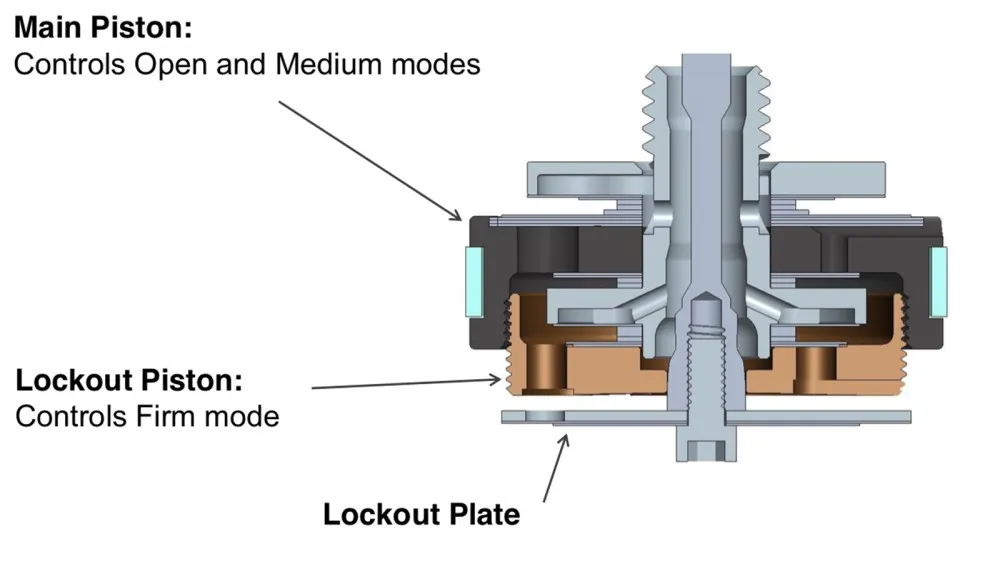
By dividing these tasks, the rider can have a firm lockout and still have a plush shock when traction is paramount
Unlike RockShox' DebonAir, as featured on the excellent Monarch RC3, the EVOL air sleeve just increases the negative air spring volume, not the positive too. That means an even more sensitive start to the golden Kashima coated stroke of the already smooth Factory grade Float shocks, for softer tyre-style ground connection.
Because the negative spring ‘helps’ the shock move more easily into the positive spring zone, operating pressures are higher than previous Float shocks. This means the stroke becomes progressive just at the right point in the midstroke for a naturally supportive feel. Despite the fact the position sensitive Boost Valve has been dropped from the system, the increased operating pressure means a predictable progression right through to a controlled bottom-out if you really G out the bike. This means that while Fox does supply volume spacers for the new shock, they’re smaller than the old ones and the shock isn’t compromised as much by adding them.
This altered spring architecture also works in reverse, keeping rebound more consistent in the upper part of the stroke where previous Float shocks could occasionally pop and kick up, particularly when mixed with a pedal reactive suspension system. If you find it too linear at the start, the EVOL sleeve is optional anyway and there’s a small volume EVOL option in the 200x50mm size too.
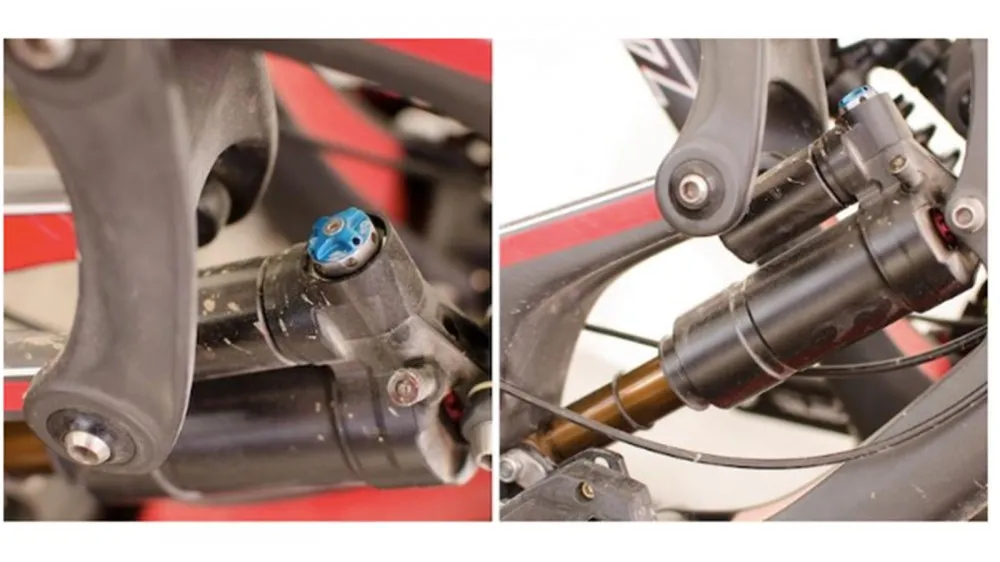
Hiding in plain sight: Fox began testing the EVOL negative air spring on the World Cup circuit several years ago
While the three position compression lever, with black three position fine tuning collar underneath, looks familiar, it works with an all new DPS (Dual Piston System) valve stack. The fine adjustment of low speed compression now occurs in the open/Descend setting like it used to before it moved to the middle ‘trail’ setting.
The Medium setting is now softened noticeably (because there’s more support in the middle of the stroke anyway) but it's still a solid enough platform for scything round turns without the occasional chatter and traction scatter of the previous Trail mode. The Firm setting is now a totally separate valve which means it can be a much stiffer, closer to lockout feeling that sprinters or smooth hill sloggers will really appreciate.
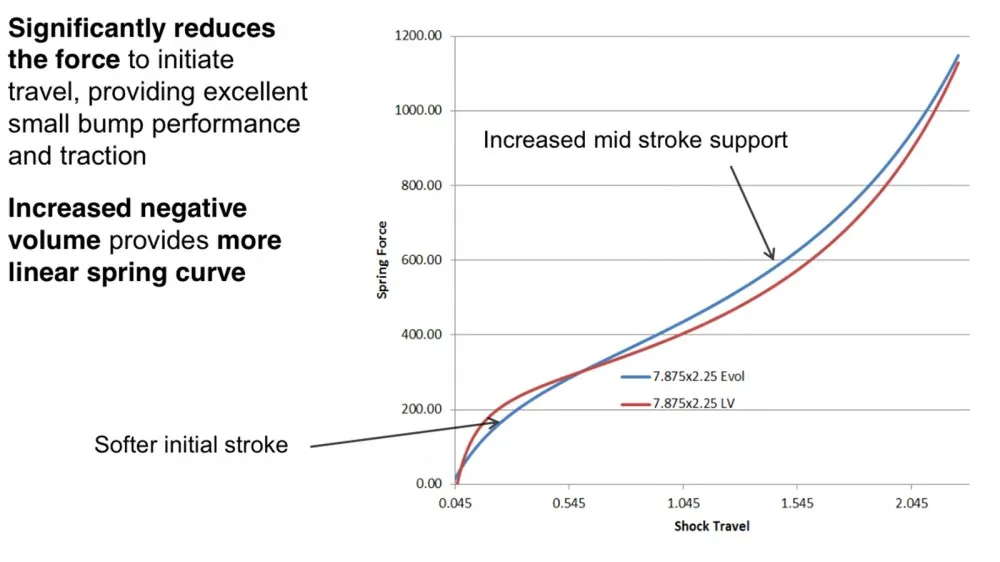
In other words the damping now gives more adjustment in its most active Open setting, a more active Medium setting but a much more solid Firm settings so more riders are likely to be able to get their Float feeling how they want more of the time. While it’s harder to pinpoint in specific damping terms, the whole unit feels more controlled and consistent, with all our testers commenting that their host bikes seemed like they had more travel and more confidence with the new Float fitted.
Verdict
Independent operation of the lockout and open modes is a welcome addition for riders who want the best of both worlds. But the real benefit of the Float DPS is its supple early stroke.
We’ve now amassed countless hours on the Float DPS on many different test bikes. Performance has been stellar across the board. The only issue we’ve encountered is fade on extended Alpine descents, but that’s to be expected with an inline shock. Riders who frequently push their suspension to its limits would be better served by the EVOL-equipped Float X or all new four-way damping adjustable Float X2 shocks that have more oil volume.
